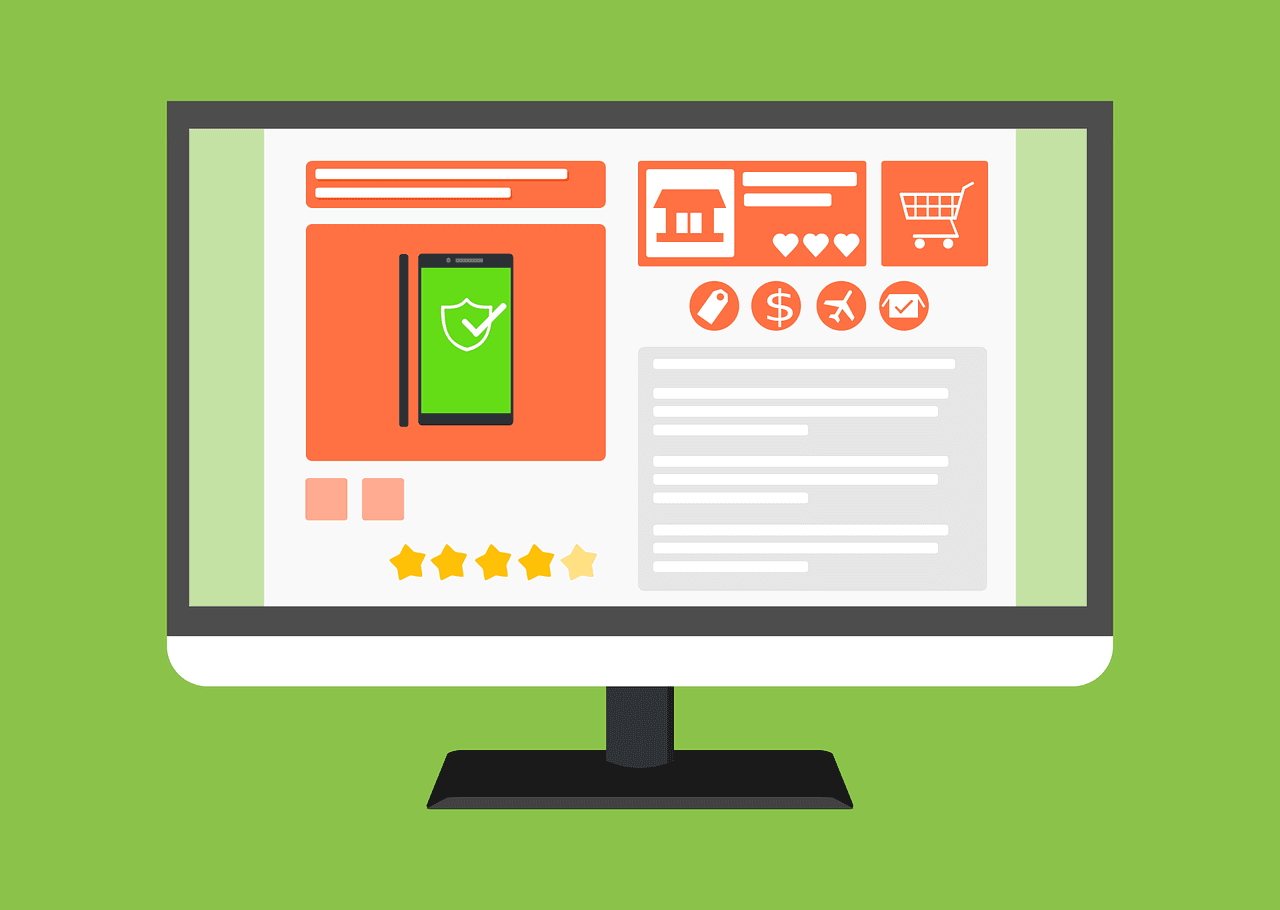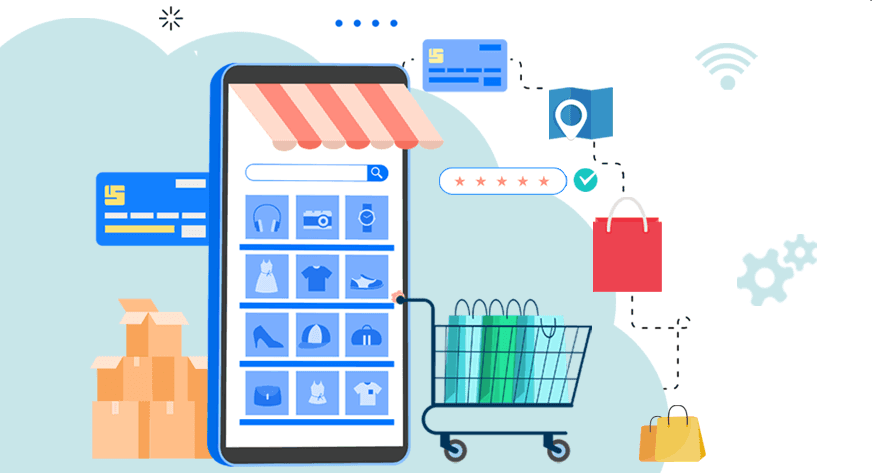Everything You Need To Know About Headless Commerce

Customers increasingly prefer personalized and integrated shopping experiences, with a whopping 84% wanting retailers to integrate their online and offline channels—according to findings from RetailNext.
Providing optimal customer experiences across their entire journey can mean constantly iterating on your ecommerce ecosystem. For a traditional ecommerce platform, such iterations can create undesirable changes, and system lags that result in negative customer experiences.
Thankfully, ecommerce businesses can now turn to headless commerce technology to enable them to easily make experimental changes to the customer-facing elements of their stores without interfering with their core platform functionalities.
In this article, we introduce headless ecommerce and break it down to explain what it means for your business and why it is the ecommerce technology of the future.
What Is Headless Ecommerce

Headless ecommerce refers to a modern architecture for building online shopping platforms with the frontend component decoupled from the backend infrastructure. The frontend of an ecommerce store is the customer-facing side (the head), while the backend is the suite of tools operating behind the scenes as the engine running the ecommerce store (the body).
This approach keeps the frontend presentation layer separate from the backend functionality of an ecommerce store. The two sides then communicate through Application Programming Interfaces (APIs).
This decoupled architecture differs from a traditional ecommerce setup where the frontend and backend of an online store are integrated as a unit. As such, any slight change to the frontend affects the backend, and vice versa.
Suppose you have a traditional, integrated online store and want to experiment with minor adjustments to suit the ever-changing customer needs. In that case, you must have a developer make the changes.
Any such change to the frontend component requires adjustments to the backend infrastructure. And this can be tedious and resource-intensive.
The decoupled architecture of a headless ecommerce setup provides a quicker and easier alternative. The customer-facing frontend is independent of the backend, so any changes made there do not affect the backend, and vice versa.
Therefore, headless commerce systems allow for greater flexibility, customization, and scalability in the development and maintenance of online stores.
How Does Headless Ecommerce Work?
You already know that headless commerce is all about a decoupled frontend and backend. But how does headless commerce work? Here is a summary.
Frontend (the headless frontend)
This is the customer-facing side or the components of the online store that customers interact with directly.
In a headless setup, the frontend is built using modern web technologies such as JavaScript frameworks. Good examples of technologies used to build a headless frontend include React, Angular, and Vue.js.
This frontend layer interacts with the backend via APIs to fetch product information, manage shopping carts, process orders, and handle user authentication.
Once a user (read customer) keys in data, the API will act as the messenger sending the request to the back and returning the required information or triggering the desired response. All of this happens so seamlessly that the user does not get to notice what happens beneath the surface.
Backend (the headless backend)
This is where the heavy lifting happens. The backend of your ecommerce platform is sometimes referred to as the commerce engine, and correctly so.
It is responsible for handling business logic, inventory management, order processing, and other core ecommerce functionalities. It exposes APIs that the frontend uses to request and manipulate data.
In the following section, we will break things down further to provide more perspective into how headless ecommerce platforms work. So sit tight and read on.
Everything You Need To Know About Headless Commerce

Headless ecommerce is relatively new but is already popular for the many benefits it represents. Understanding it in depth can help you leverage it better for your business.
Read along to learn the key aspects of headless commerce.
API-Driven Approach
Since the frontend and backend are decoupled in a headless system, this ecommerce system relies heavily on APIs.
An API is a software that interfaces between two or more applications. As intermediaries, APIs enable applications to communicate or exchange data with each other.
APIs provide the crucial link between the frontend and the backend, allowing them to communicate and complete tasks. APIs act as the bridge through which data transfer happens between the separate systems, enabling various actions.
Suppose you purchase an item on your mobile phone. If the store is a headless ecommerce shop, the presentation layer where you key in the purchase information will send an API request to the store’s application layer.
This application layer comprises the store’s backend infrastructure (order management tools like the payment gateway).
Once the API transfers the data to this application interface, the system will process the order. After that, the API will communicate back to the presentation layer, which then displays the order status at your end.
Whether you use a smartwatch, smartphone, virtual storefront on your desktop or kiosk screen, this mechanism is the same.
More importantly, you will likely get the same response across all these interfaces for the same ecommerce store because the backend infrastructure processing the order is the same. It just needs to receive the appropriate API call to execute the desired response.
Decoupled Architecture
In traditional, monolithic ecommerce platforms, the frontend user interface and the backend business logic are tightly integrated. Therefore, such a platform typically has only one frontend for each backend.
In headless commerce, these components are separate (decoupled), allowing you to replace or upgrade one without affecting the other. Each side is built independently of the other, after which an API comes in to enable communication between them.
This approach enables greater flexibility and faster innovation. For instance, a store’s backend functionality can power multiple frontends through APIs.
You can also make changes to your front ends at will without affecting your core business functionalities because the frontend does not have to deal with any processing activity. The main work of a headless solution’s frontend is displaying information to the user.
Frontend Flexibility
Since the frontend and backend functionalities of a headless commerce solution are separate entities, you can change the frontend at will to suit the exacting customer needs.
In a monolithic system, changing your ecommerce store’s frontend would impact the backend functionality. However, the headless commerce system decouples the two ‘ends,’ allowing for the freedom to make necessary changes to the frontend without touching the backend.
You can use various technologies to build your frontend, such as content management systems (CMS), progressive web apps (PWA), native mobile apps, and more.
This flexibility and the ability to control all the elements that customers interact with lets you create unique and engaging user experiences across different platforms and devices.
With headless ecommerce, brands can get more creative with their website content and experiment with various designs across various customer touch points.
According to Salesforce data, headless ecommerce flexibility means that companies with such architecture are more likely to expand into new channels than their non-headless counterparts. The former has a 77% likelihood of rapid expansion compared to the 54% likelihood of non-headless companies.
Personalization and Customization
Flexibility is not the only benefit that comes with the decoupled nature of a headless ecommerce setup.
Since making changes to the frontend without affecting the core functionalities of your online store is possible, you can customize and personalize the user experience with ease.
Specifically, you can tailor content, design, and functionality to specific customer segments without requiring the help of a developer. Since such necessary adjustments are more straightforward in this system, you can achieve improved engagement and conversion rates.
This is in line with 2020 findings, which established that headless commerce could significantly improve conversions and engagement, according to 62% of ecommerce leaders.
Speed and Performance
Headless commerce can enhance the performance of your online store by enhancing its load times.
Pages in a headless ecommerce store generally load faster, and the website performance is better because the frontend is separate from the backend. This means the platform delivers content to the user separately from the presentation layer, reducing the amount of code that must load in order to display a web page.
This way, you can achieve snap-of-the-finger load times that significantly resonate with online shoppers.
Keep in mind that an online shopper has an average attention span of approximately eight seconds. The almost-instant load times associated with headless architecture go a long way in letting you grab customer attention before losing them.
Independently scalable components
Because the frontend and backend are decoupled, you can scale each component independently.
Suppose your web traffic grows significantly; you can allocate more resources to the backend servers while keeping the frontend presentation layer unchanged, or vice versa.
This provision can significantly help your business maintain optimal performance at scale.
Third-Party Integrations
Thanks to its modular nature, headless commerce makes it easier to integrate with third-party services and tools.
Whether you need to add analytics, marketing automation, payment gateways, or other services, the modular nature of headless architecture simplifies the integration process.
Developer-Friendly Setup
Headless commerce is considered developer-friendly for a few reasons. Chief among them, it provides developers the complete freedom to work with the technologies and programming languages they’re most comfortable with.
It allows them the adaptability and flexibility to choose the functionalities they prefer or need.
This can lead to faster development cycles and a more agile approach to building and iterating on the e-commerce platform.
Compare this to monolithic ecommerce systems built as all-in-one solutions. In such integrated platforms, everything a developer does, from the frontend features (UX, store template designing, etc.) to the backend (customer accounts, order management, etc.), is dictated by what the software allows.
Learning Curve
While headless commerce offers numerous benefits, it may have a steeper learning curve than traditional monolithic platforms.
The development team must be familiar with API integrations, various frontend frameworks, and the complexities of managing a decoupled architecture.
Building and producing a separate frontend and backend also requires custom programming that is more complex and requires more time.
Additionally, managing a headless commerce setup might require additional effort in terms of maintenance, as you’re dealing with separate systems that must be maintained and updated individually.
However, this trade-off is often offset by the advantages of customization, better performance, and scalability.
Best Headless Commerce Examples
Numerous brands have taken leaps toward going headless, making plenty of headless ecommerce examples on the market.
Our top headless website example is a brand you’re likely familiar with and is loved by billions of people worldwide: Nike.

While you might have heard lots of stories or experiences with this world-famous footwear retailer, you might not know that it has gone headless.
As a way to gain more sales on mobile customers, the Nike Corporation implemented a combination of React SPA and Node.js. Consequently, the ecommerce giant optimized elements like visuals and CTAs (calls to action) to suit the smaller screens, gradually leading to greater market share.
Here is a list of other top brands that have moved to headless ecommerce with incredible success.
Is Headless Commerce Right for Your Business?
Top brands have experienced incredible results in their headless migration. While headless commerce has its share of drawbacks, the gains certainly outweigh the drawbacks, and you must assess them alongside your future plans.
Yes, headless ecommerce may have a steeper learning curve than traditional monolithic systems, but the future of ecommerce is headless.
Going headless may be an excellent way to improve your product storytelling and provide enhanced customer experiences.
Summary of What You Must Know About Headless Commerce
In this article, we have noted that headless commerce solutions have decoupled frontend and backend as the primary feature. Therefore, they use APIs for communication between the frontend and the backend. These ecommerce platforms are faster in operation, more flexible, and scalable, with great support for third-party integrations and omnichannel capability.
In our subsequent posts, we’ll go into detail of how headless commerce compares with traditional monolithic systems to help you choose better.
Meanwhile, if you want to take an early lead and dive into the world of headless ecommerce, reach out to the group of headless ecommerce experts at Endertech to help you choose the right platform and build a headless online store that resonates with your customers.
